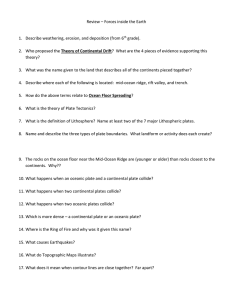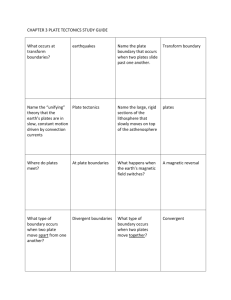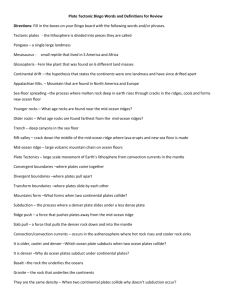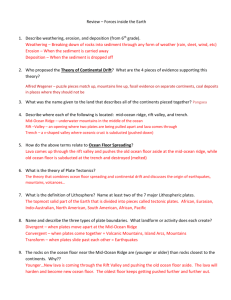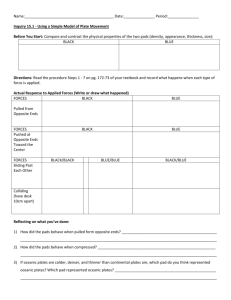Study Guide – Plate Tectonics
advertisement
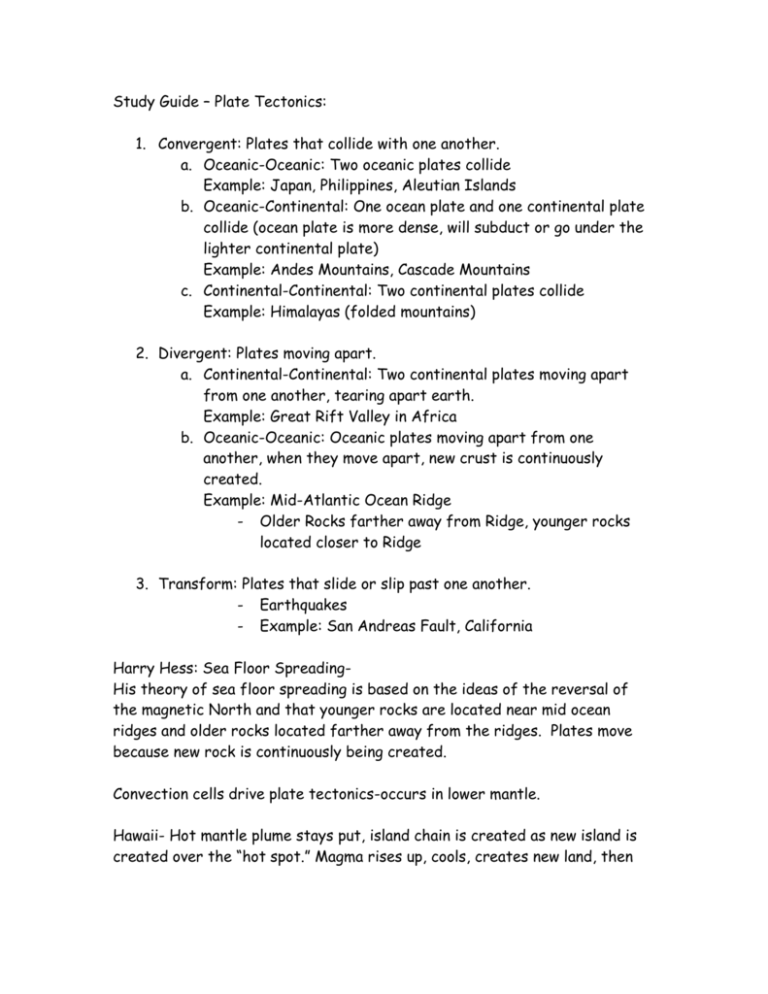
Study Guide – Plate Tectonics: 1. Convergent: Plates that collide with one another. a. Oceanic-Oceanic: Two oceanic plates collide Example: Japan, Philippines, Aleutian Islands b. Oceanic-Continental: One ocean plate and one continental plate collide (ocean plate is more dense, will subduct or go under the lighter continental plate) Example: Andes Mountains, Cascade Mountains c. Continental-Continental: Two continental plates collide Example: Himalayas (folded mountains) 2. Divergent: Plates moving apart. a. Continental-Continental: Two continental plates moving apart from one another, tearing apart earth. Example: Great Rift Valley in Africa b. Oceanic-Oceanic: Oceanic plates moving apart from one another, when they move apart, new crust is continuously created. Example: Mid-Atlantic Ocean Ridge - Older Rocks farther away from Ridge, younger rocks located closer to Ridge 3. Transform: Plates that slide or slip past one another. - Earthquakes - Example: San Andreas Fault, California Harry Hess: Sea Floor SpreadingHis theory of sea floor spreading is based on the ideas of the reversal of the magnetic North and that younger rocks are located near mid ocean ridges and older rocks located farther away from the ridges. Plates move because new rock is continuously being created. Convection cells drive plate tectonics-occurs in lower mantle. Hawaii- Hot mantle plume stays put, island chain is created as new island is created over the “hot spot.” Magma rises up, cools, creates new land, then the plate moves off the “hot spot” and a new island is created that moves over the “hot spot.” Wegener’s clues to continental drift- page 247 1. Fossils 2. Rocks (mountain ranges, coal beds) 3. Puzzle like fit 4. Glaciers (climate clues, glaciers present in regions with warm dry climates) Pangaea-supercontinent 2 types of plates: 1. Ocean plate- Thick, made of basalt and more dense 2. Continental plate- Thin, made of granite and less dense
